Chemistry has long been known as “the central science,” because it bridges the gap between the physical and life sciences and the applied sciences like engineering, environmental science, and medicine. The Department of Chemistry at Southern Methodist University emphasizes an interdisciplinary approach by focusing our research and teaching efforts on the intersections of chemistry with areas of current need.
On this page, you will learn about the interdisciplinary nature of chemical research, the cutting-edge research taking place on SMU’s high-performance computers, and the history of SMU’s Theoretical and Computational Chemistry Ph.D. Program. You will also learn about our expert faculty and discover what current and former students have to say about their experiences in the program.


Humans of the modern era take for granted things like clean drinking water, plastic, antibiotics, computers, and gasoline. We cannot imagine a world without these things, and few people stop to think about how different life in the 20th and 21st centuries looks from the centuries that came before.
Yet if they did stop to think, they would realize that all of these advances were made possible through the study of Chemistry, the science that studies the fundamental interactions of all matter. The most transformative discoveries and advances of the 20th and 21st centuries have all come from the labor of chemists hard at work in laboratories across the globe.
Chemistry has long been known as “the central science,” because it bridges the gap between the physical and life sciences and the applied sciences like engineering, environmental science, and medicine. It is both “the central science” and the most foundational of the sciences since every other field of science relies on chemical insights into the nature of atoms and molecules in order to understand how more complex systems operate.
Because of its centrality and its role in transformative innovation, Chemistry is at the heart of many key economic sectors. The energy, technology, health, and materials sectors all rely on chemical insight to advance, improve, and deliver high quality products that support human flourishing. In addition, Chemistry plays a central, if not to say leading, role in initiating, carrying out, and supporting developments that help guarantee the sustainability of our world.
The reliance of key economic sectors on Chemistry means that there is significant federal and industry investment in the development of top-notch chemists and significant opportunity for chemists to thrive in the many roles available to them in different fields.
Chemistry is ultimately about the material world which means that advances in chemical understanding have profound implications for the world that all human beings inhabit and experience.
At Southern Methodist University, Dr. Elfi Kraka, the Chair of the Department of Chemistry, has devoted much of her research to the development of anti-cancer drug design. Her work developing drugs and therapies that can treat currently incurable diseases is just one example of the ways in which Chemistry impacts the everyday lives of all people.
Here are more examples from industries where Chemistry is improving how we live and the future of our communities:

Because chemical research is fundamental to all science, it must take place in the context of the other fields of science in order to be most powerful and useful. For the purpose of fulfilling its role and meeting the requirements of our time, Chemistry has changed from a traditionally organized discipline with four or five sub-disciplines to a new research model with many interdisciplinary and multidisciplinary research topics that reach beyond the borders of traditional Chemistry and make chemists the ideal partners for researchers in medicine, biology, engineering, and environmental sciences. Studying Chemistry in an interdisciplinary way allows students to translate their knowledge and background into a wide variety of career paths and fields of research.

At SMU in the Department of Chemistry, we emphasize this interdisciplinary approach by no longer offering graduate courses in the classical disciplines of chemistry (general, organic, analytical, and physical), but instead, teaching our courses on the major topics in an interdisciplinary way, focusing our research and teaching efforts on the intersections of chemistry with areas of current need.
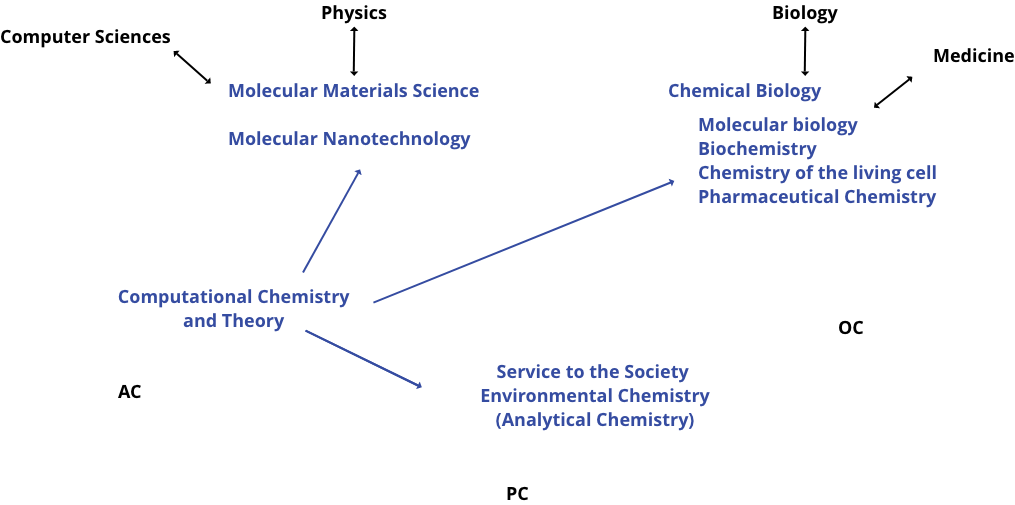
One major criterion of the research work at SMU's Department of Chemistry is the chemical relevance of the results obtained from our efforts for Chemistry, Pharmacy, or Nanotechnology. Therefore, Chemistry Professors at SMU collaborate and continuously seek new cooperation with experimental groups in all disciplines of Chemistry, Pharmacy, and Nanotechnology.

 The development and application of methods and computer programs in Computational Chemistry for the purpose of initiating, carrying out, and fostering interdisciplinary research and teaching in all areas of chemistry, materials sciences, and nanotechnology at a high level of excellence.”
The development and application of methods and computer programs in Computational Chemistry for the purpose of initiating, carrying out, and fostering interdisciplinary research and teaching in all areas of chemistry, materials sciences, and nanotechnology at a high level of excellence.”


Synthesis and Manufacturing: Learn how to synthesize and manufacture any new substance (compact synthetic schemes, high selectivity, low energy consumption, benign environmental effects)
Protection of the individual, analytical chemistry: Develop new materials and measurements devices that will protect citizens (terrorism, crime, disease) against dangerous substances and organisms with high sensitivity and selectivity
Computational Chemistry, Theory: Understand and control how molecules react – over all time scales and the full range of molecular size (observation of molecules during reactions)
Molecular design, Computational Chemistry: Learn how to design and produce new substances, materials, and molecular devices with properties that can be predicted, tailored, and tuned before production (use of chemical theory and computation)
Biochemistry: Understand the chemistry of living systems in detail (assembling of biomolecules into functional complexes, chemistry of the living cell, chemistry of the brain)
Drug Design: Develop medicines and therapies that can cure currently untreatable diseases (drug design for cancer, viral diseases, ADME)
Materials science, Nanotechnology: Develop self-assembly as a useful approach to the synthesis and manufacturing of complex systems and materials (nanotechnology)
Environmental Chemistry: Understand the complex chemistry of the earth, including land, sea, atmosphere, and biosphere so we can maintain its livability (how to deal with pollution and other threats to earth)
Energy: Develop unlimited and inexpensive energy (new ways for energy generation, storage, transportation)
Biomaterials, Materials Science: Design and develop self-optimizing chemical systems (copying the development of biological systems through evolution: medicines, catalysts)
Chemical Engineering: Revolutionize the design of chemical processes to make them safe, compact, flexible, energy efficient, environmentally benign
Public Relations: Communicate effectively to the general public the contributions that chemistry and chemical engineering make to society (use the media, give lectures)
Education: Attract the best and the brightest students into the chemical sciences


Theoretical Chemistry is a branch of Chemistry that uses conceptual theories derived from physics and mathematics to explain and generalize the rules that govern all chemical systems and interactions. It involves the development of computational and theoretical methods based on quantum chemistry and mathematical procedures in order to describe the physical properties and the chemical behavior of atoms and molecules.
Theoretical Chemistry comprises several disciplines such as:
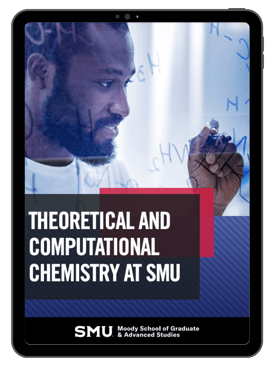
Access the guide at any point by saving it to your laptop to reference while you navigate applying to graduate school.

Although the terms Theoretical Chemistry and Computational Chemistry are very often used synonymously, the fields are not identical. Computational Chemistry takes the conceptual framework of Theoretical Chemistry and allows the insights and questions of Theoretical Chemistry to be rigorously tested, modeled, and observed by running programs on high-performance super computers. Computational Chemistry requires a strong understanding of theory, but also the ability to translate theoretical methods into suitable computer programs so that chemical problems can be solved.

Traditional Chemistry is a way of thinking about Chemistry as separated into four or five distinct sub-disciplines: general, organic, analytical, and physical. The focus of traditional Chemistry is the study of matter in a laboratory setting where chemical reactions can be tangibly attempted, observed, and recorded. As technology and computing power improve, chemical problems that reach beyond the borders of traditional Chemistry and that involve multidisciplinary and interdisciplinary research efforts are being addressed and solved.
The primary goal of Chemistry is to control chemical reactions with the purpose of generating useful, non-toxic, and non-dangerous materials with desirable properties in an economic way.
Computational Chemistry is a discipline of chemistry that can substantially contribute to all the fields of science as well as the metamorphosis of traditional to modern Chemistry. Computational chemistry with quantum chemistry, molecular modeling, and molecular dynamics as its major tools has matured and become an important partner of experimental chemistry in the last decades. These computational tools are used to shorten and facilitate chemical discovery processes, avoid costly and/or dangerous experiments, and obtain information not amenable to experiment.
All work of the Department of Chemistry at SMU has as a common goal to understand the electronic structure of molecules so that reliable predictions of their properties and chemical behavior can be made. These predictions become important in all those cases where chemical experiments are not conclusive, too dangerous, too costly or not possible at all.
Computational Chemistry makes advances that are beyond the possibility of traditional chemistry, but relies on input from other branches of science to inform the relevance of its modeling efforts. This is one of the major reasons the Department of Chemistry at SMU emphasizes an interdisciplinary approach to teaching and research.


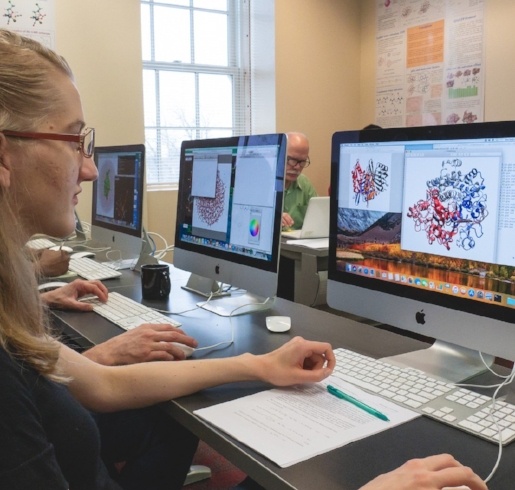
The Department of Chemistry's research at SMU focuses on the large-molecule world, concentrating on biomolecules, engaging in drug design, and introducing computational nanotechnology.
The Department of Chemistry at SMU is at the forefront of the dynamic and expanding future of Computational Chemistry. Our extensive research plan details the challenges and chemical problems that we are tackling in the next 10 years
We have special objectives that will be fulfilled within the next 3-5 years:
Department of Chemistry's vision for the next 10 years comprises the following goals:



One of the early founders and leaders of the field of Quantum and Computational Chemistry, Sir John Pople, had an enormous impact on the research and development of the CATCO Group at SMU.
John Pople received the Nobel Prize in 1998 for his development of computational methods in quantum chemistry. One of the first scientists to embrace the power of computers to solve complex chemical problems, Pople designed a program called Gaussian70 in the late 1960s which enabled chemists to run quantum mechanical calculations for complex systems like molecules. Using the program, chemists were able to make accurate predictions about the properties and behaviors of molecules.
Pople’s impact on the world of Chemistry and on his students was transformative, and eventually led to the formation of the original Computational and Theoretical Chemistry Group (CATCO), started by SMU professor Dieter Cremer.

Dieter Cremer became a postdoctoral fellow with the Pople group at Carnegie Mellon in the fall of 1972. He worked closely with the Nobel Laureate winner, Pople, on a number of projects and learned from him about computational methods. Their productive time together resulted in the development of:
Dieter Cremer went on from there to his own illustrious scientific and teaching career. While at the University of Cologne, he was a founding member of the original CATCO Group, a union of theoretical and computational chemists who designed and used the quantum chemical program package, COLOGNE, as a major tool in their work.
Former members of the CATCO Group are today working in 8 different countries all over the world. 20 of these members are working as assistant, associate or full professors at well-known universities. So far, there have been more than 75 graduate students and research associates working in the CATCO group.
In 2009, Cremer moved the CATCO Group to Southern Methodist University and became the Director of SMU’s Computational and Theoretical Chemistry Group (CATCO) and Professor of Chemistry at Dedman College.
His research ranged from the development of state-of-the-art relativistic methods and computer programs, and their application to chemical problems. His recent work focused on computer design of new catalysts, the description of H-bonds in proteins, as well as chelating organic molecules that can precipitate toxic metals such as lead, cadmium and mercury from industrial wastewater.
He has published more than 360 peer-reviewed research articles in high-ranking journals, more than 50 of which he published since joining the Southern Methodist University. Dr. Dieter Cremer has presented his research at nearly 200 international conferences, and 18 of the 60 graduate and postgraduate students he has supervised to date have become professors at universities in seven different countries around the world.
The Chemistry Department at SMU is proud to honor the memory of Dr. Dieter Cremer and carry on his legacy of excellence in research and teaching.


The Department of Chemistry at SMU is also proud to be the home of the very first rigorous and comprehensive Theoretical and Computational Ph.D. program (TCC). This program, founded by Dieter Cremer, offers an intensive and success-oriented education in computational and theoretical chemistry, with the goal to prepare students for a future career in academia or private industry.


SMU’s Chemistry Faculty have been encouraged and inspired to start a rigorous TCC Ph.D. program by the atmosphere of Southern Methodist University, an well-renowned academic institution. The ambitious 10 year research goals and objectives of the Department of Chemistry are only made possible because SMU and its leadership provide:
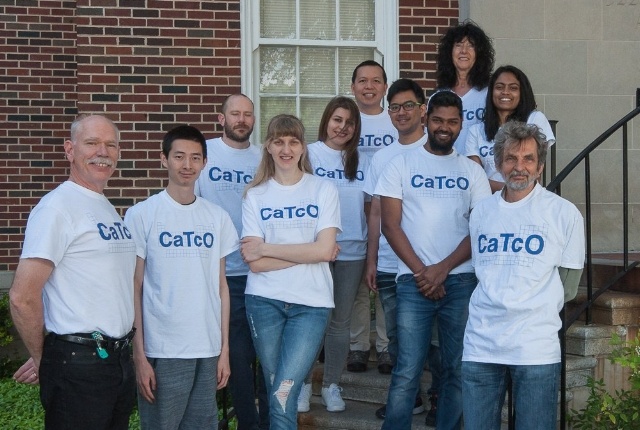
Of particular note for the Theoretical and Computational Ph.D. program, SMU provides:
Want to learn more about SMU's graduate studies in Theoretical and Computational Chemistry?
The Department of Chemistry has access to three high-performance clusters:
The SMU HPC facility encompasses multiple compatible clusters, known as ManeFrame and SMUHPC. The resources on both clusters are freely available for research and educational use to all faculty and students. They are jointly managed by the Center for Scientific Computation, an association of faculty from across the University, and the Office of Information Technology. In 2015 the two clusters were merged for more effective resource management of more than 10,900 cores and 1.5 PB of storage.
One of the key administrators of the computational facilities at SMU is Rob Kalescky, a graduate from the Department of Chemistry. His graduate work with the Chemistry Professors at SMU prepared him for his current role as HPC Applications Scientist.
ManeFrame has a total of 1,104 Dell M610 compute nodes each with two Intel Xeon Nehalem 4-core 2.80GHz processors with a total compute capacity of 8,832 cores. It is supported with a 1PB high performance Lustre parallel storage system for high-speed scratch space, backed by a DDN S2A9900 storage array and controllers. Compute nodes and storage are all connected via a high speed DDR InfiniBand network at 20Gbps. Of the 1,104 compute nodes, 20 have 192GB RAM for memory intensive jobs, and the remaining nodes have 24 GB each for distributed applications.
SMU’s latest addition to the computer facilities: ManeFrame (ranked among the top 500 fastest supercomputers in the world)
Total Capacity in 2015: 10,900 cores, 120 teraflops, 1.5 PB storage
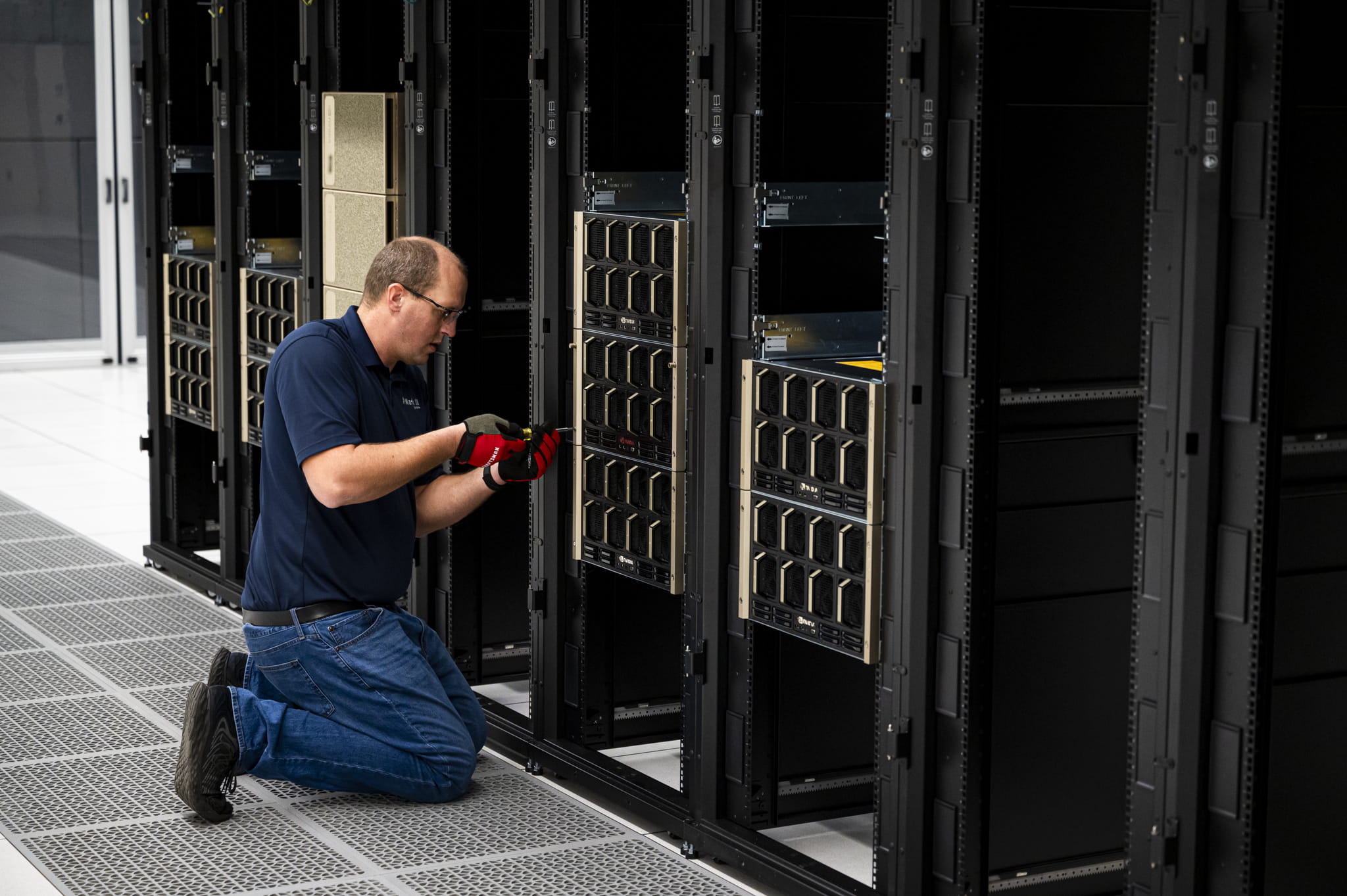
SMU is investing $11.5 million into a powerful new supercomputing research system featuring an NVIDIA DGX SuperPOD.
Connected with the NVIDIA Quantum InfiniBand networking platform in SMU's data center, it will produce a theoretical 100 petaflops of computing power enabling the university's network to perform "a blistering 100 quadrillion operations per second.”
The SMUHPC cluster has a total of 215 Dell compute nodes for a total of 2,080 CPU cores. SMUHPC has a mix of Intel Xeon Nehalem and Intel Xeon Westmere processors and has 6GB RAM per CPU core. In addition it has two high memory nodes with 144GB RAM on each. SMUHPC is also supported with a 500TB high performance Lustre parallel storage system for high speed scratch space backed by a NexSAN storage array and controllers. In addition, two nodes provide NVIDIA accelerator processors with 1,472 GPU cores. In combination the theoretical peak performance of ManeFrame and SMUHPC totals approximately 120 TFLOP’s.
CATCO received from SMU in 2010 a 32 cpu local computing cluster (Scheme1a1) with 128 cores, 768 GB shared memory (resources of individual nodes combined via an aggregated virtual machine), and 16 TB hard drive capacity. This computer is generally used for program development and smaller benchmark tests. Large-scale production runs are performed at no cost at SMU’s High Performance Computing (HPC) Facility.
Because of the high quality research environment at SMU beyond the Department of Chemistry, there are exciting avenues of interdisciplinary work available to graduate students.”
For example, SMU’s Center for Drug Discovery, Design, and Delivery (CD4) in the Dedman College of the Humanities and Sciences is a novel multi-disciplinary focus for scientific research targeting medically important problems in human health. Using innovative approaches, CD4’s mission is to potentiate the development of new therapeutics, their delivery methods as well as the translation of these new therapeutics to clinical studies. Training new generations of biomedical researchers in state-of-the-art techniques completes the overall mission of the center.”
CATCO thought leaders, Dr. Dieter Cremer and Dr. Elfi Kraka have been involved in the work of CD4 and have published several investigations including their research on “A Computer Assisted Drug Design Approach to Non-toxic Enediyne Anti-tumor Drug Candidates” and “Investigation of Artemisinin – a Traditional Chinese anti-Malaria drug.”


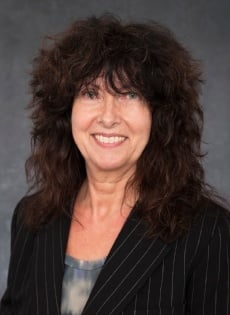 Dr. Elfi Kraka
Dr. Elfi KrakaDr. Elfi Kraka is Chair of the Department of Chemistry at SMU. She was trained at the University of Köln and Göteborg University, and she speaks four languages. She has written more than 130 peer refereed papers and given more than 50 invited lectures at international meetings. She referees work for about 10 international journals and for the National Science Foundations of Sweden and Germany, she is member of the editorial board of the Journal of Computational Chemistry and editorial board of the International Journal of Quantum Chemistry, and member of the scientific board of the World Association of Theoretical and Computational Chemists (WATOC).
Research Interests
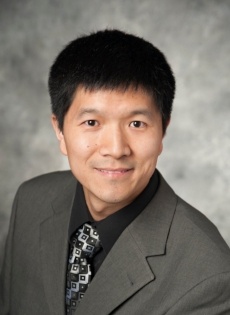
Dr. Peng Tao joined the Department of Chemistry in the fall of 2013 as an Assistant Professor. He received his B.S. in Chemistry (1998) and M.S. in Physical Chemistry (2001) from the Peking University in China. He obtained his Ph.D. in Computational Chemistry from the Ohio State University in 2007. The Tao Research Group focuses on developing highly efficient and accurate computational methods to calculate free energy for chemical reactions and biological processes. They are also applying these novel free methods in combination of powerful computational tools, such as molecular dynamics (MD) and quantum mechanics (QM), to solve real world chemistry and biology problems.


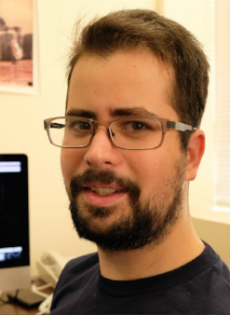
Hometown: Brasilia, Brazil
Status: first graduate of the TCC Ph.D. program
Description of research: “During my Ph.D., I studied the strength and nature of non-covalent interactions such as halogen, chalcogen and pnicogen bonds using advanced quantum mechanical methods (some of these methods were developed by our group).”

 I feel proud that I could finish my Ph.D. on time with six world-class publications in such a demanding program. This was only possible due to the high-performance computer provided by SMU and due to the great effort and patience that my mentors, Dr. Cremer, and Dr. Kraka, invested in my education. It was a great honor and privilege to learn from their classes, seminars, and workshops.”
I feel proud that I could finish my Ph.D. on time with six world-class publications in such a demanding program. This was only possible due to the high-performance computer provided by SMU and due to the great effort and patience that my mentors, Dr. Cremer, and Dr. Kraka, invested in my education. It was a great honor and privilege to learn from their classes, seminars, and workshops.”
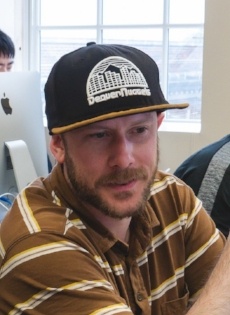
Hometown: Denver, Colorado
Status: first year graduate student in the TCC Ph.D.
Description of research: “My first projects involved transition state (TS) theory. My latest project involves investigating the role of intra-molecular hydrogen bonds in stabilizing neutral histidine. My future project will be to investigate and help advance theory behind un-traditional non-classical agnostic bonding complexes.”

 The TCC program is preparing me well for my future career by teaching me how to conduct quality research, produce professional publications, and present my work to the scientific community.”
The TCC program is preparing me well for my future career by teaching me how to conduct quality research, produce professional publications, and present my work to the scientific community.”


If you are interested in the Theoretical and Computational Chemistry Ph.D. program at SMU, we invite you to visit the Department of Chemistry's Program Page.
Ready to apply? Begin an application today for the United States' first Theoretical and Computational Ph.D. Program.
Want to learn more about SMU's graduate studies in Theoretical and Computational Chemistry?
